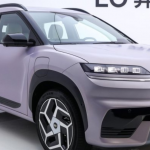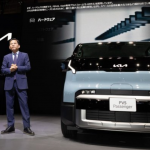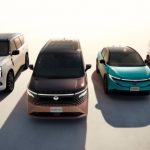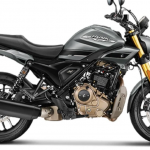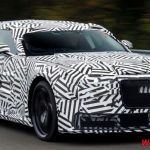Mahindra & Mahindra, one of India’s homegrown giants, secured a 59% stake in SML Isuzu for ₹555 crore—a deal greenlit by the Competition Commission of India. And this wasn’t the end—Mahindra will launch an open offer for another 26%, effectively pushing for full control over the commercial vehicle maker.
This isn’t just a corporate transaction—it represents a bold move with far-reaching implications for both companies, the commercial-vehicle market, and the entire Indian automotive ecosystem. Here’s a closer look.
1. The Deal in Detail
- Stake & Price: Mahindra picked up 59% of SML Isuzu—known for light-to-medium commercial vehicles—for ₹555 crore (~$67 million). The CCI approved the acquisition around mid-June 2025.
- Open Offer: Following the initial acquisition, Mahindra is set to make an open offer to absorb another 26%, effectively positioning itself to control about 85% of SML Isuzu.
2. Why It Matters
Strengthening Commercial-Vehicle Presence
Mahindra has long been a major force in tractors and SUVs, but with this acquisition, it significantly boosts its portfolio in the light and medium commercial vehicle (CV) segment. From delivery vans to mini-buses, this move fortifies Mahindra’s position against rivals like Tata Motors and Ashok Leyland.
Operational Synergy
Combining Mahindra’s scale and SML Isuzu’s niche manufacturing strengths promises richer operational synergy. This allows Mahindra to integrate production, reduce costs, and tap into SML’s existing supply chain and dealer network.
Market Competitiveness
This acquisition enhances Mahindra’s competitiveness in a fragmented and fiercely contested CV space—offering robust alternatives to Tata’s Ace, Ashok Leyland’s Dost, and beyond.
3. Strategic Context: Why Now?
Consolidation amid Slowdown
Though passenger vehicle growth has hit a cyclical slowdown—fiscal 2025 saw only 2% YoY growth to 4.3 million units—the commercial segment still holds promise. With urban and logistics industries recovering, small commercial vehicles remain vital.
EV Push & Futureproofing
India is accelerating its push toward electric commercial vehicles, and Mahindra is already active in this space. Through SML Isuzu, it gains technical know-how and production capacity to scale EV and CNG-powered commercial models.
Preparation for Global Scale
Mahindra isn’t just thinking domestic. Integrating SML Isuzu helps assemble a global-ready platform, pushing exports and serving emerging markets in Asia and Africa, where low-cost CVs are in demand.
4. Benefits for Stakeholders
Mahindra Shareholders
Expect dividends—cost savings, broader product range, and revenue diversification. Investors typically reward such well-timed consolidation and strategic positioning.
SML Isuzu
Being under Mahindra’s wing means access to capital, a broader dealer network, and R&D muscle—offsetting typical challenges for small independent manufacturers.
Dealers & Customers
More model variety, better maintenance support, and integrated back-end systems could translate to a smoother customer experience.
Industry-Wide Impact
This deal could trigger a ripple effect—expect more consolidation across India’s crowded auto component and vehicle segments as companies prepare for EV transitions and global competition.
5. Potential Risks & Challenges
Integration Complexities
Blending operations, cultures, and systems is never easy. Mahindra will need strong project management to avoid disruptions.

Regulatory Hurdles
While the CCI gave the thumbs-up, the open offer and implementation phases are subject to stricter oversight—any hiccup could slow momentum.
Market Competition
Tata Motors, Ashok Leyland, and newcomer EV startups may sharpen strategies to counter Mahindra’s bigger footprint.
6. What It Signals for 2025 & Beyond
- Commercial Vehicle (CV) Segment Foothold: Mahindra could emerge as a dominant player not just in SUVs, but in light & medium CVs.
- EV and CNG Leadership: This strengthens Mahindra’s EV ecosystem, allowing scaling of CNG and electric portfolio across CVs.
- Consolidation Trend: This may mark the beginning of a wave—smaller Indian OEMs might get snapped up by larger players looking for scale and EV competency.
- Supply Chain Resilience: Owning manufacturing assets helps Mahindra manage component shortages, compliance costs, and input volatility—especially crucial with rising global metal costs.
7. The Bigger Picture: India’s Auto Evolution
India’s auto industry is transiting:
- Passenger-car growth is moderating (fiscal 2025 growth slowed to ~2%)
- SUVs and CVs hold strong, exemplified by Mahindra’s growth; in June alone SUVs grew 18%, placing Mahindra at #2 in PV market .
- EV and sustainability trends are accelerating, with players like VinFast and Tata launching new EV models like the Tiago.ev, Harrier.ev, and others.
- Regulatory cost pressures are squeezing profit margins, pressuring manufacturers to scale up and optimize through consolidation .
Mahindra’s acquisition is not an isolated corporate maneuver—it’s a clear bet on reshaping the future of Indian mobility: bigger in CVs, stronger in energy-efficient tech, and more globally competitive.
✅ Final Take: A Pivotal Milestone
The SML Isuzu deal reflects a critical strategic blueprint: consolidate, enhance EV-aligned platforms, and prepare for global competition. If integration succeeds, Mahindra will gain a decisive edge in the commercial vehicle domain. Investors, dealers, and customers should monitor the upcoming open offer and its execution. This acquisition could indeed mark a turning point in India’s automotive narrative.

Hello, my name is Muskan Kumari and I am an experienced Digital Marketer. I have been blogging for the last 3 years and I have special interest in SEO. Here I give you easy bikes and writes easy-to-understand reviews and news about the latest bikes, helping readers choose the best options.. My aim is to always provide you with accurate, new and useful information.

